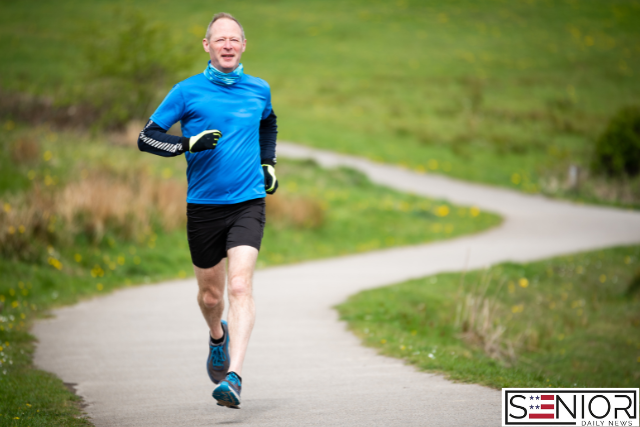Fitness Over 50: How to Test Your Strength with These 5 Moves

Aging gracefully doesn’t mean giving up on your strength. In fact, staying strong after 50 is one of the best ways to support longevity, maintain independence, and improve quality of life. As we age, muscle mass naturally declines—a process known as sarcopenia—but the great news is that strength can be maintained and even built at any age with the right approach.
Whether you’re just getting back into fitness or already active and want to measure your progress, there are five essential strength tests that can help you understand where your body stands and what to work on. These moves not only evaluate your current fitness but can also serve as training tools for continued strength and mobility.
Let’s dive into how you can assess your physical strength safely and effectively after 50 using these five key moves.
Why Testing Strength Matters After 50
Strength testing isn’t about competing with younger versions of yourself or others. Instead, it’s a practical way to:
- Identify muscular imbalances
- Pinpoint areas of weakness or tightness
- Prevent injuries
- Track improvements over time
- Set realistic, measurable goals
- Enhance mobility and independence
The following five moves are simple, require minimal equipment, and focus on functional strength—the kind that helps you carry groceries, climb stairs, or lift grandchildren.
1. The Sit-to-Stand Test (Lower Body Strength)
What it tests: Leg strength, balance, and endurance
Why it’s important: Getting in and out of chairs safely is essential for daily living and long-term independence.
How to do it:
- Sit on a sturdy chair (about knee height) with your feet flat on the floor.
- Cross your arms over your chest.
- Set a timer for 30 seconds.
- Count how many times you can stand up fully and sit down without using your hands.
Scoring guide:
- Excellent: 17+ reps for men, 15+ for women (age 50-59)
- Average: 12–16 reps
- Needs Improvement: Below 11 reps
Tip: Practice this regularly to build endurance and lower-body strength, especially in the glutes and thighs.
2. Plank Hold (Core Strength and Stability)
What it tests: Core endurance and stability
Why it’s important: A strong core supports posture, reduces back pain, and aids balance.
How to do it:
- Get into a forearm plank position—elbows under shoulders, feet hip-width apart.
- Engage your glutes, pull your belly button toward your spine, and keep your body in a straight line.
- Time how long you can hold the position with proper form.
Scoring guide:
- Excellent: 60 seconds or more
- Average: 30–59 seconds
- Needs Improvement: Under 30 seconds
Tip: Modify by planking on your knees if needed. Gradually build time by 5–10 seconds each session.
3. Push-Up Test (Upper Body Strength)
What it tests: Chest, shoulders, triceps, and core
Why it’s important: Push strength is crucial for tasks like pushing doors, carrying bags, and supporting upper-body mobility.
How to do it:
- Start in a modified push-up position (on knees) or full push-up if able.
- Lower your chest toward the floor and press back up.
- Do as many push-ups as you can with proper form without resting.
Scoring guide (Modified Push-Ups):
- Excellent: 20+ reps
- Average: 10–19 reps
- Needs Improvement: Fewer than 10 reps
Tip: Keep elbows at a 45-degree angle from your body and maintain a neutral spine.
4. Single-Leg Balance Test (Stability & Coordination)
What it tests: Lower body strength, balance, and proprioception
Why it’s important: Good balance prevents falls, a leading cause of injury for older adults.
How to do it:
- Stand next to a wall or chair for safety.
- Lift one foot off the ground without touching the raised leg to your other leg.
- Time how long you can hold the position (up to 30 seconds).
- Repeat on both legs.
Scoring guide:
- Excellent: 30 seconds or more per leg
- Average: 15–29 seconds
- Needs Improvement: Under 15 seconds
Tip: Practice by standing on one leg while brushing your teeth or waiting in line.
5. Farmer’s Carry (Grip Strength & Functional Total-Body Power)
What it tests: Grip strength, shoulder stability, core, and overall endurance
Why it’s important: Grip strength correlates with overall health and mortality risk; carrying groceries or suitcases relies on this exact ability.
How to do it:
- Hold a moderate to heavy dumbbell in each hand (start with 10–15 lbs per hand if new).
- Stand tall and walk a straight line for as long as you can without dropping your posture or the weights.
- Measure the distance or time.
Scoring guide:
- Excellent: 60+ seconds with proper form and moderate weight
- Average: 30–59 seconds
- Needs Improvement: Below 30 seconds or unable to maintain posture
Tip: Use kettlebells or grocery bags if dumbbells aren’t available. Engage your core and walk with purpose.
Making the Most of Your Results
The goal is not perfection—it’s progress. Once you’ve completed the five strength tests, take note of:
- Which areas are strong and which need improvement
- Where you may need to increase flexibility or mobility
- Whether your balance is symmetrical between the left and right side
From there, you can build a weekly workout plan that targets specific needs. For example, if your sit-to-stand score is low, include squats and lunges in your routine. If your plank hold is short, incorporate more core-focused movements like bird dogs or dead bugs.
Safety First: Know Your Limits
Before beginning any new fitness regimen or testing routine, check with your healthcare provider—especially if you have conditions such as osteoporosis, joint problems, or cardiovascular concerns. Use good judgment, listen to your body, and never push through sharp pain.
Incorporating Strength into Daily Life
Functional strength exercises don’t need to be confined to the gym. Look for everyday opportunities to stay active and engaged:
- Take stairs instead of the elevator
- Do a few squats or calf raises while brushing your teeth
- Practice balance while cooking or waiting for the kettle
- Carry groceries instead of using a cart for short distances
These small, consistent movements make a big difference over time.
Age Is Just a Number
The narrative around aging is shifting—from slowing down to leveling up. At 50 and beyond, strength is more than just muscle—it’s confidence, resilience, and independence. These five tests are tools to empower you, helping you understand your body and push it safely toward its strongest potential.
Stay committed, stay curious, and most importantly—stay strong.
Image Designed Using Canva






